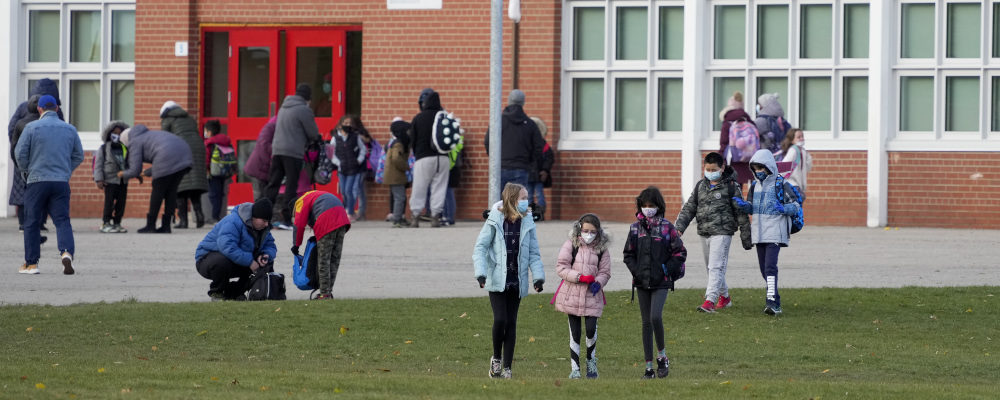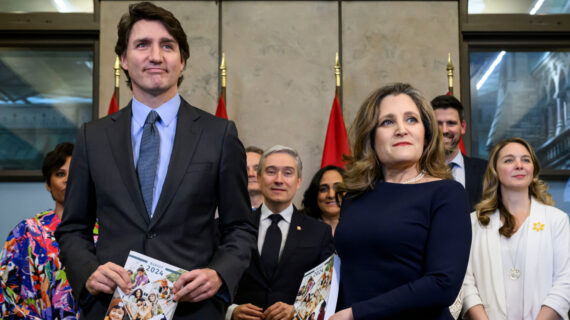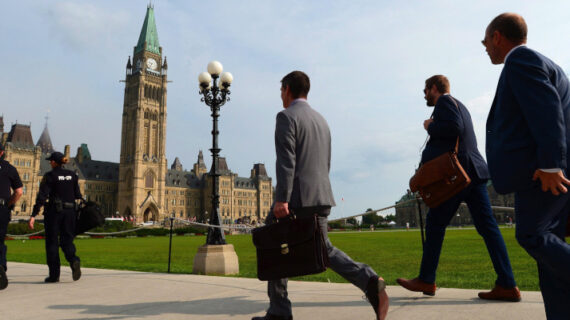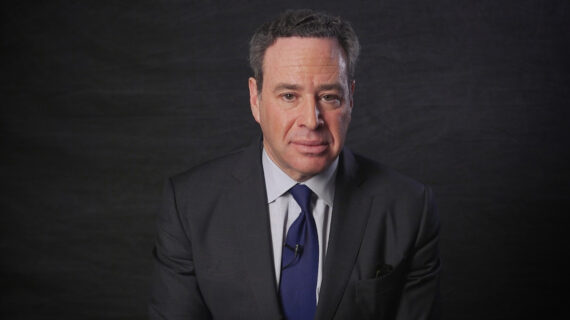Any hope for a definite end to the protracted COVID-19 Pandemic is gradually disappearing. The latest Omicron surge looks unstoppable in Canada and, in province after province, rates of infection and transmission are setting new records.
Some solace is provided when we see signs of fewer serious cases requiring lengthy hospitalization and leading to death.
A fundamental psychological shift is underway with profound implications for children, families, and schools. “When will the pandemic end?” is giving way to “How can we learn to live with COVID?” Confronting a rampant Omicron spread, necessity is giving birth to a new line of thinking. Leading global think tanks were the first to confront “the new normal” and it’s now being embraced by those once thought least likely to change their scripts: Canada’s provincial public health officers.
The shift from pandemic to endemic was forecast by health science experts specializing in epidemic diseases and policy wizards commissioned to forecast social trends. A decade ago, medical researcher Sander L. Gillman, produced a rather obscure book, Diseases and Diagnoses: the Second Age of Biology (2010), connecting the dots between “moral panics and pandemics” and forecasting a global “pandemic killer” potentially worse than the 2009 H1N1 influenza. Four months ago, the American public policy think tank McKinsey & Company got out front of us by daring to produce a policy research paper with the rather audacious title “How the world can learn to live with COVID-19.”
The big shift on COVID-19 has now arrived and is seeping into public discourse. The most recent episode of CBC-Radio’s The House, hosted by Chris Hall, provided a virtual clinic on the profound re-orientation now underway. The dramatic and uncontainable spread of Omicron this month has prompted Nova Scotia’s Chief Medical Officer of Health Dr. Robert Strang and a growing group of health experts to change their approach to COVID-19 and to publicly acknowledge that the populace is going to have to get used to living with the virus. Nowhere is that shift more profound than in our strategy of protecting children and teens in and around K-12 schools.
Nova Scotia’s public health chief, nationally recognized for his “tough” COVID-19 regulations from March 2020 to December 2021, has changed his tune. “We are going to have to…move away [from eradication], and accept that the virus that causes COVID is going to be around with us,” Dr. Strang stated on air. Our new goal, he claimed, should be to “manage” COVID-19 based upon “having good levels of immunity from both vaccination and infection…[so] that we no longer have to have these wide restrictive measures and…this huge focus on trying to identify as many cases as possible.”
That’s a seismic shift and Dr. Strang is not alone in changing his approach. Ontario Premier Doug Ford announced that the goal now is to “slow the spread because it cannot be stopped.” Dr. Strang’s opposite number in Newfoundland and Labrador Dr. Janice Fitzgerald has also come to that conclusion. Health care policy expert Katherine Fierlbeck of Dalhousie University offered a succinct explanation for the change. People eventually “get tired of top-down governance,” she said on CBC’s The House, and to retain public trust requires more transparency, including fuller disclosure of the evidence used in making decisions, its limitations, and the tradeoffs between potential benefits and harms.
Convincing school-age parents and educators in our K-12 schools is proving to be a formidable late-pandemic challenge. Pandemics like COVID-19 tend to evoke and provoke extremes in people, clearly revealed in UBC psychologist Steven Taylor’s October 2019 book, The Psychology of Pandemics. While some people in the broader education community are resilient and cope fairly well with the uncertainties, a significant proportion of others, especially parents of younger school-age children and educators, reflect what Taylor terms the “cave syndrome.” Fearful of COVID-19 spread, they become “excessively anxious” spinning a protective web at home and resistant to sending their kids back to school until absolutely every potential hazard and germ has been removed from that environment.
Much of that hyper-vigilance is reflected in a new wave of child-protection parent advocacy. Examining the social media traffic produced by one such parent Facebook group, Nova Scotia Parents for Public Education, an online community of 22,000 parents and friendly educators, provides plenty of evidence of the mass psychology. That group, coordinated by Stacey Rudderham, and a small group of engaged parents, has led the charge in alerting parents to every potential “exposure site,” identifying all manner of lapses in school-level public health precautions, and signs of potential mass outbreaks. Public spokespersons for the group have even challenged the credibility of Dr. Andrew Lynk and his IWK Children’s Hospital team.
The N.S. Facebook group built its membership by creating an early warning system for school-level exposures and attracting hundreds of concerned parents. Over the past 22 months, Rudderham’s group has also supported the Nova Scotia Teachers Union, several times, in pushing for school closures as “circuit breakers.” Organized pressure group activity, going back to March 2020, helps to explain why Nova Scotia, with comparatively low case counts until recently, has closed schools for a total of 21 weeks, second only to Ontario in North America.
Echoing NSTU president Paul Wozney in early January 2022, the Facebook group “deplored” plans to return to in-person schooling, calling into question the repeated assurances of Dr. Strang and public health officials. That strategy worked, because recently-elected N.S. Premier Tim Houston relented to the public pressure, extending the holiday break, for the second time, and into a third week. In short, Dr. Strang’s CBC Radio The House comments may actually have been aimed at changing the channel in his home province.
Watch for the big shift underway in public health policy. When it arrives in your province, you can expect it to mimic the public policy “management” strategy mapped out by global think tanks. You can expect provincial leaders and public health officers to (1) define the new normal; (2) monitor progress through “disease surveillance”; (3) limit illness and death; and (4) slow transmission, responding to identified “hot spots.”
It will not be easy to convince stressed-out parents suffering advanced “COVID-fatigue” that the dreaded COVID is here to stay and we have to learn, somehow, how to cope with the changed landscape, both inside and outside of schools. It will also take far more than a few media briefings and targeted comments drawing upon the McKinsey & Company playbook on how to “manage” our way from pandemic to endemic.




